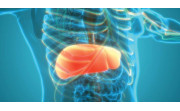MYCOTOXIN PROPERTIES AND METABOLISM: PART 1
It appears mycotoxins are gaining a significant amount of interest as the literature increases on their toxic effects on humans and other animals. Just with any topic, as more data surfaces, more questions arise. Mycotoxin sources, testing, impacts, and treatments have been discussed in other blogs that you can review.
What has received less attention is how these compounds behave, particularly within our bodies, and what levels are commonly observed. The latter being particularly ambiguous. In this article, properties and the metabolism of the top four most common mycotoxins will be explained to help further understand their behaviors, along with common ranges that are typically observed in Great Plains Laboratory. It is important to keep in mind that most of this research is done within the agriculture communities and laboratories, since human evaluations can be difficult to assess, for obvious reasons. It is the intent to use as much data from human studies as possible, but it may not always be feasible. It is also important to understand that although the typical ranges are provided, this does not assess the severity of those mycotoxins to an individual. Humans and other animals deal with these mycotoxins very differently, and it appears to be highly individualized within the species and current state of health of the individual.

Ochratoxin A (OTA) is the most common mycotoxin to show up on the test. Average positive ranges are generally from 15-30 nanograms/g of creatinine for people who are suspicious of mycotoxins. Results have been shown to be much higher in more extreme cases, with levels reaching up into the hundreds and even thousands range.
Toxicology
OTA is most notably a nephrotoxin, especially as it relates to the proximal tubule, which has been observed in several phylums. It also can impact the immune system; however, the exact mechanism is variable among different species. Studies have been observed the presence of OTA and the depletion of lymphoid cells, and stimulation of cytokine production especially with IL-2 and IL-5. Other influences are linked to inhibition of various enzymes such as phenylalanine hydroxylase, phenylalanine-tRNA synthetase, renal phosphoenolpyruvate carboxykinase, and carboxypeptidase A. OTA also can enhance lipid peroxidation, which is another aspect of the cellular damage caused by this mycotoxin. It also has the potential to cause proliferation of the cell via the interference with hormonal Ca2+ signaling, and therefore impairing Ca2+ cAMP homeostasis.
Properties
Structurally, OTA consists of a para-chlorophenolic group, which contains a dihydroisocoumarin moiety, which is linked to L-phenylalanine via an amide link. At a neutral pH, OTA is slightly soluble in water, and soluble in polar organic solvents. Once alkaline conditions occur, it becomes soluble in all the aqueous solutions. Its melting point is between 90 °C (194 °F) to 169 °C (336.2 °F) depending on the solvent, proving it’s high stability especially in food processing.
Metabolism
It is absorbed into the system, via oral, skin or inhalation routes. From the ingestion standpoint, OTA is absorbed in the GI tract through various points. Taking note that the hydroxyl group of OTA is more in the nonionized form at low pH, which improves its absorption, therefore a significant amount of OTA is absorbed in the stomach. It is also readily absorbed in the intestines via passive diffusion, which is aided by the OTA binding to serum albumin. This complex also increases the half-life with a single dose of OTA lasting about 35 days. It is thought that this binding capacity is what allows OTA to transfer from blood to milk.
The human body attempts to eliminate some OTA via the bile, however enterohepatic recycling makes that less efficient. Once in the liver, the cytochrome P-450 microsomes along with NADPH, metabolize OTA further into hydroxyochratoxin A for elimination. OTA itself is mainly excreted through the urine, yet the organic anion transport system in the proximal and distal tubules of the kidney actively reabsorb OTA. At this point, OTA is being transported with smaller carrier proteins, which allow the compound to pass through the glomerular membrane at an increased rate. This further increases the bioaccumulation and contributes to the extended half-life, leading to the cause of the nephrotoxicity that ensues with consistent, larger exposures.

Mycophenolic Acid (MPA) is one of the better understood mycotoxins within the medical community since it is used by the pharmaceutical industry. The average positive range tends to be between fifty and the mid hundreds. In more extreme cases, it can be in the thousands. If someone is taking the drug that contains MPA, the amount excreted tends to be between 40,000-100,000 nanograms/g of creatinine.
Toxicology
The main mechanism of action for MPA is as an inhibitor of inosine monophosphate dehydrogenase, leading to an inhibition of the de novo pathway of guanosine nucleotide synthesis. This significantly reduces T- and B- lymphocytes since they are dependent on de novo synthesis of purines for their proliferation.
Properties
MPA is a polyketide compound, which is not soluble in water, and has a melting point around 141 °C (285 °F). Similar to OTA, it has a high affinity for albumin. When albumin is in lower amounts because of a disease or inflammatory state, the free MPA concentration may increase. MPA is metabolized by glucuronidation via glucuronyl transferase, primarily in the liver, but also in the intestines and kidney. This ultimately forms MPA glucuronide (MPAG). This metabolite has little activity on the immune system, however the other metabolite that is formed, acyl glucuronide, will also impact the immune system, similarly to MPA. When analyzing the metabolism of MPA in stable transplant patients, 28% of the MPA taken orally was converted to MPAG, and the ratio of MPA:MPAG:acyl glucuronide was about 1:24:0.28.
Metabolism
MPA, as observed through oral administration, is absorbed in the small intestines, and primarily eliminated in the urine by active tubular secretion and glomerular filtration, with approximately 60% or more as MPAG, and about 3% as MPA. Keep in mind here that the MPAG has less impact on the immune system versus the MPA, so measuring that would have less clinical significance as it relates to assessing toxicity. MPAG also utilizes bile in its elimination, however it can be deconjugated by certain flora in the gut back to MPA, leading it to be reabsorbed. Some of the enzymes involved in MPA glucoronidation (particularly UGT1A8 and UGT1A9), are expressed outside of the liver, thus contributing to the metabolism within the GI tract. The half-life of MPA is between 8-16 hours, therefore when extreme elevations are occurring, it is likely from a very recent exposure.

Previously known as F-2, Zearalenone (ZEA) is another mycotoxin that has a large amount of recognition. It is a very common contaminate of grains to the point it is regulated closely by numerous countries. What sets it apart from other mycotoxins is that it has a unique application in regulating hormones in livestock due to its estrogenic effects. This pharmaceutical drug is called zeranol and is approved to be used in livestock within the US, though the FDA has banned it for human use. It should be noted here that the World Anti-Doping Agency has been tracking zeranol since 2003 in athletes (who typically consume a significant number of livestock products) and has only found 6 positive tests globally. Typical ranges found on the GPL MyCoTOX Panel tend to be below 20, and in more extreme cases, can get up in the hundreds or above.
Toxicology
ZEA’s main mechanism of action is activating estrogenic receptors, creating estrogenic responses. It is therefore classified as an endocrine disrupter. The impact of ZEA on estrogenic effects varies significantly throughout animal species. Swine tend to be the most sensitive to it, while humans require a more chronic exposure to be significantly harmful. Cascading effects have been identified in the uterine organ and mammary tissue, like estradiol elevations. ZEA also has the capacity to act on the hypothalamus and pituitary, mimicking estrogenic effects. There is some discussion of its association with hepatotoxicity and immunotoxicity, but these are not as well understood.
Properties
The structure of ZEA is a phenolic resorcylic acid lactone and is extremely similar to the estradiol structure. There are various forms, with at least seven derivatives identified just with corn, alone. They have all been shown to impact estrogen receptors. It has a melting point of 164 °C (328 °F), and solubility in water is very limited (0.002g/100mL). However, it is soluble in various solutions, particularly in aqueous alkali. ZEA is fairly heat stable but can be partially destroyed with extrusion cooking. The heat degradation is dependent on the solution it is in, but overall, it is completely degraded at 225 °C (437 °F). It is half-life from oral dosage is approximately 86 hours in swine, and 72 hours in hens. Not much information exists on humans except for one study by Mukherjee et al. where it was estimated to be around 11.98 hours in young girls. It has been shown to bioaccumulate within adipose tissue and reproductive tissue of females, and interstitial cells within the testes.
Metabolism
Ingestion or inhalation seems to be the most common routes of exposure, though ZEA does have the ability to permeate through human skin. Absorption of ZEA occurs within the intestinal lumen for most animals. In swine observations, somewhere between 80-85% was absorbed through a single dose. ZEA is mainly conjugated through glucaronidation in the liver and the intestinal mucosa. It then goes through enterohepatic circulation and biliary excretion, with stool being the major route of elimination. Rumen and microbiota metabolism is also a potential; however, this is dependent on absorption, enzymes, and receptor availability and/or presence in particular species.

Citrinin (CTN) is likely the second most common mycotoxin to be reported, but unfortunately it has the least amount of recognition in the literature. It is very common to find alongside OTA, especially since they typically come from the same species (Aspergillus niger). General ranges found for positive results are below a hundred.
Toxicology
The mechanism of action for CTN toxicity is not as well understood as the other mycotoxins. It has been found to cause oxidative stress and increased permeability of mitochondrial membranes, however, not cellular membranes themselves. In these mitochondrial preparations, CTN inhibited succinate oxidase and NADH oxidase, while also completely inhibiting cellular respiration. The target organ appears to be the kidney in a variety of phylums. Embryocidal, fetotoxic, and genotoxic have been suspected, and proven in some organisms. Immunotoxicity and hepatotoxicity is also a potential, but data is lacking. When CTN and OTA are together within the system, they work cooperatively in reducing the activity of RNA synthesis in the renal tissue.
Properties
CTN is a polyketide mycotoxin that is insoluble in cold water, barely soluble in hot water, and soluble in polar organic solvents. It can breakdown in acidic and alkaline solutions. CIT’s melting point is around 100 °C (212 °F). Relative to other mycotoxins, CTN is fairly heat sensitive, and unstable in temperature elevations. When heated (>175 °C, in dry conditions, >100 °C in water), it has the potential to degrade to CIT H1, which is more toxic, and CIT H2, which is less toxic, than CTN. It also has a short half-life in the human blood (~9 hours), and in urine (6-8 hours), and for this reason, it is thought it does not bioaccumulate in organisms unless there is repeated, large exposures.
Metabolism
Oral, inhalation, and skin tend to be the major routes of exposure. Unfortunately, there is very limited data as to the exact route and elimination of CIT in humans, however excretion moves through the kidney’s, which is where it has the potential to bioaccumulate.



